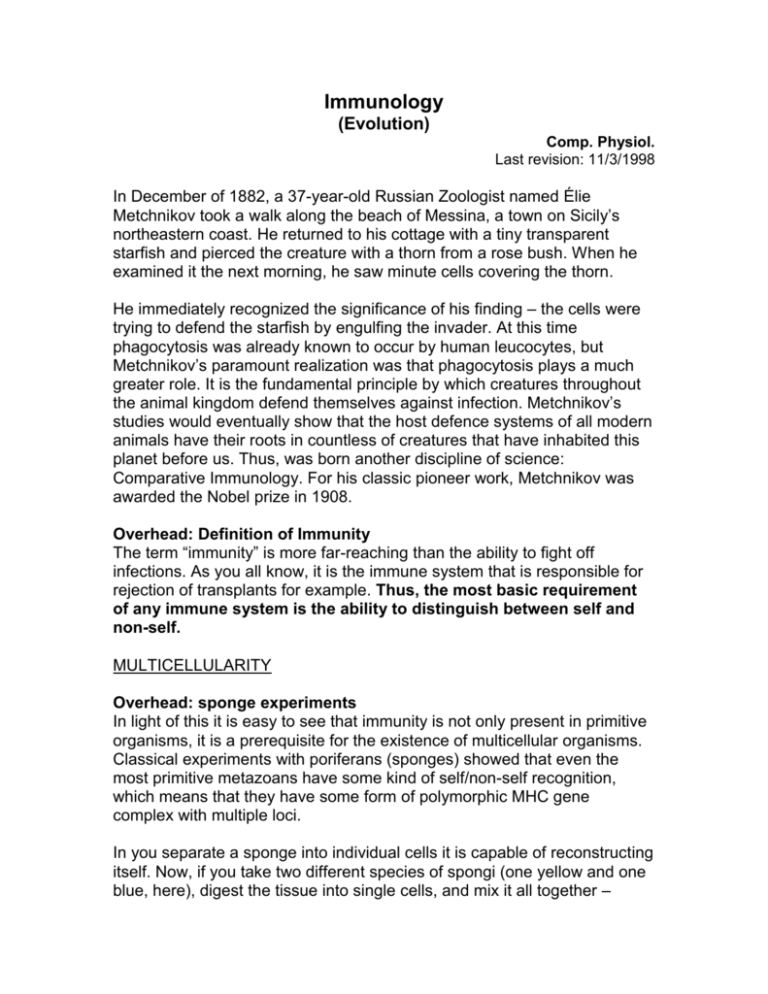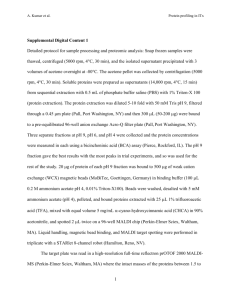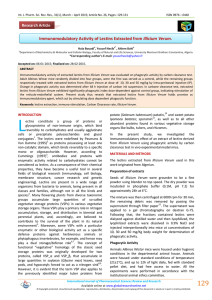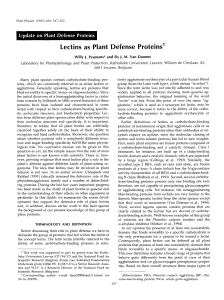rejection immune
advertisement

Immunology (Evolution) Comp. Physiol. Last revision: 11/3/1998 In December of 1882, a 37-year-old Russian Zoologist named Élie Metchnikov took a walk along the beach of Messina, a town on Sicily’s northeastern coast. He returned to his cottage with a tiny transparent starfish and pierced the creature with a thorn from a rose bush. When he examined it the next morning, he saw minute cells covering the thorn. He immediately recognized the significance of his finding – the cells were trying to defend the starfish by engulfing the invader. At this time phagocytosis was already known to occur by human leucocytes, but Metchnikov’s paramount realization was that phagocytosis plays a much greater role. It is the fundamental principle by which creatures throughout the animal kingdom defend themselves against infection. Metchnikov’s studies would eventually show that the host defence systems of all modern animals have their roots in countless of creatures that have inhabited this planet before us. Thus, was born another discipline of science: Comparative Immunology. For his classic pioneer work, Metchnikov was awarded the Nobel prize in 1908. Overhead: Definition of Immunity The term “immunity” is more far-reaching than the ability to fight off infections. As you all know, it is the immune system that is responsible for rejection of transplants for example. Thus, the most basic requirement of any immune system is the ability to distinguish between self and non-self. MULTICELLULARITY Overhead: sponge experiments In light of this it is easy to see that immunity is not only present in primitive organisms, it is a prerequisite for the existence of multicellular organisms. Classical experiments with poriferans (sponges) showed that even the most primitive metazoans have some kind of self/non-self recognition, which means that they have some form of polymorphic MHC gene complex with multiple loci. In you separate a sponge into individual cells it is capable of reconstructing itself. Now, if you take two different species of spongi (one yellow and one blue, here), digest the tissue into single cells, and mix it all together – would you get a green sponge? No, of course not, instead the cells of the two sponge species segregate forming blue and yellow (e.g. speciesspecific) clusters. The MHC of sponges has been characterized and it turns out to be a proteoglycan-complex with no structural homology to our MHC. Overhead: text (invertebrate host defence) Defence systems against invading parasites (viruses, prokaryotes, or eukaryotes) have evolved parallel to the evolution of a more efficient selfrecognition system. The most primitive form of such defence systems is phagocytosis, which is nothing else than an extension the normal foraging function present in protozoan eucaryotes. Macrophages that can identify foreign objects and destroy these are present in all phyla. Invertebrates lack lymphocytes and an antibody-based humoral immune system. Nevertheless, they do have mechanisms that seem to be precursors of those aspects of vertebrate immunity. For example, lymphocyte-like cells are present in earthworms – which have probably been around for the last 500 million years. Perhaps more significantly, invertebrates have molecules that appear to function similarly (but not identically) to our antibodies. For example, if you inject a foreign protein, such as BSA, into a sea anemone it will produce a protein that binds to the BSA. A principal difference between these “antibacterial peptides” and our antibodies is that the former have no ability to create an adaptive response. I will now give some samples of defence mechanisms in animals from some different phyla. This review does by no means intend to be comprehensive. ANNELIDA Overhead: Xenograft from Eisenia unocolor in Lumbricus sp. Graft rejection This picture shows how a graft of tissue from a different species in an earthworm has been completely overgrown by new host tissue. The graft is necrotic and the area is heavily invaded by phagocytotic cells. These phagocytes are called coelomocytes with a common name. In annelids, transplants of tissue between individuals of the same species, allografts, are usually accepted. In contrast, transplants from a different species, xenograft, are rejected. Sometimes you will see rejection of tissue grafts from different races or sub-species of annelids. In one species, Eisenia foetida, there is even rejection of allografts between individuals within the same population. Further, there is evidence for an inducible memory component of the annelid immune system, because if one graft from a donor is rejected a second graft from the same donor will be rejected more quickly. Immunological memory is something that has been considered unique for vertebrates. Phagocytosis and encystation Just like in the starfish, whenever a graft or a parasite invades the coelom of an annelid the invader is surrounded by coelomocytes. Smaller foreign bodies are engulfed, but if the invader is too large for phagocytosis – for example an eucaryotic parasite - a capsule of fibrinogenous material is build around the invading body. In later stages Ca is incorporated into the capsule to reinforce the structure. Overhead: Lectins Antibacterial peptides One class of coelomocytes in earthworms look conspicuously like vertebrate lymphocytes, but as far as we know immunoglobulin production is a monophyletic trait in Chordata. Annelids, and perhaps all invertebrates, do however have some kind of antibacterial peptides, but these are distinct from antibodies. Among these proteins, there is a group of proteins called lectins, which bind to sugar residues on cell surfaces. The role of lectins in immune response is not known exactly; they appear to play a part in tagging of invading organisms. In some way this coating attracts phagocytotic cells. ARTHROPODA The horseshoe crab, Limulus polyphemus, is a primitive arachnid that has been around for more than 300 million years. Already in the beginning of this century researchers found that limulus has a protein in its hemolymph that very effectively agglutinates erythrocytes from humans and several other vertebrates. The protein which causes agglutination, limulin, has now been isolated and characterized. Overhead: Limulin Limulin is a pretty large molecule. It has a MW of 400,000 and it is built from 18 subunits, which have a MW of 22,500 each. Calcium is required to keep the subunits together. Limulin has a hexagonal shape with a hole in the center. It is interesting to note that similar hemoagglutinating proteins, with similar characteristics, have been isolated from crustaceans, molluscs, and echinoderms. Thus, these proteins appear to be very widespread among invertebrate phyla. Even though limulin is by no means related to immunoglobulins (Ig), the functions are similar. Like Ig, limulin acts like an opsonin – that is both are molecules that bind foreign particles and thereby tagging them for destruction by other cells. Overhead: Hemolin Vertebrate Ig are now known to belong to an ancient family of proteins – the immunoglobulin superfamily. Hemolin from the silk moth and similar insect proteins are also members of this superfamily. Hemolin consists of 4 subunits with high degree of homology between each other. These subunits are called Ig folds and they are the same building blocks that all Ig molecules are built up from. To the left there is an IgM molecule and the hemolin is to the right side of this figure. Neuroglian is another protein within the same family and it has been isolated from Drosophila. All proteins within the Ig-superfamily are believed to be involved in selfrecognition in some sense. Like Ig, lectins, and limulin, hemolin is an opsonin; it binds to bacteria surfaces. The binding triggers the formation of a complex with several other components in the hemolymph. In contrast to limulin, the hemolin production is inducible by bacterial infection. The hemolin level in the hemolymph can increase up to 18 times in response to infection. Overhead: Lysin from milkweed bug Already back in 1964, it was found that induced resistance to bacteria in the milkweed bug could be transferred from one individual to another by transfusion of hemolymph from “immunized” individuals. In this study shown here, they looked at the time-course for release of the bacteriolytic substance and compared that to the time-course of antibody production in a toad (Bufo marinus) at different temperatures. Lysin was found to be induced much quicker than the toad antibodies were and the lysin levels also returned to background much faster. The fundamental difference between the systems is that the Ig production involves cloneselection and lymphocyte proliferation, whereas induction of merely involves turning on a gene. Overhead: cecropins In recent years, a number of antibacterial peptides have been isolated from insects. Of these, the cecropins are best characterized. Cecropins are present also in mammals. This bottom line shows the amino acid sequence of a cecropin isolated from porcine intestinal mucosa. All cecropins have 30-some amino acid residues, but at least in insects they are synthesized as pre-pro proteins, which have 62-64 amino acid residues. Cecropins are synthesized in the fat body of insects within 24 h following infection. The way they function is to create ion pores in the bacterial membrane. A curiosity about these peptides is that they are unique in that, even if you would artificially synthesize them from D-amino acids, they are still fully active. This lack of steriodependence is pretty strong evidence that cecropins are not acting via protein-protein interactions.









